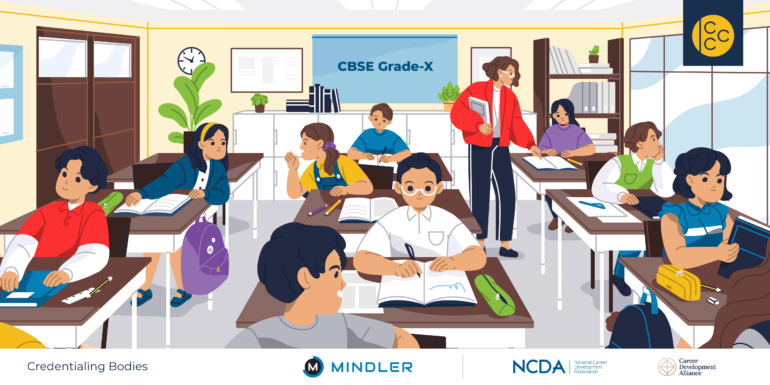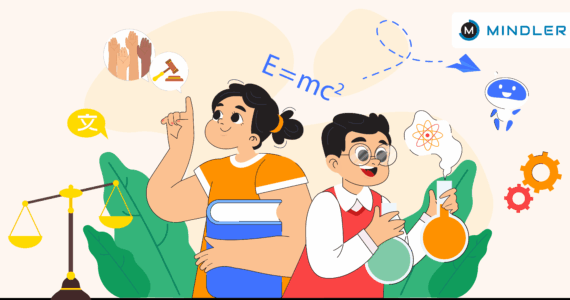The Central Board of Secondary Education (CBSE) has officially announced a significant structural shift in the Class 10 board examination system. Starting from the academic session 2025–26, students will have the opportunity to appear for two board exams in a single academic year — a move that aligns with the vision of the National Education Policy (NEP) 2020 . This new CBSE two board exams 2025 model aims to promotes a low-stress, student-centric evaluation model.
In this post, we break down the key highlights of the new model and explore how career coaches and educators can guide students and parents.
🗓️ Two-Phase Board Exam Model

* Eligibility For Phase 2 Exam would be Improvement, Compartment, Essential Repeat
Note: Internal assessment will be conducted only once before the main examinations.
🗓️ Result Declaration

General Conditions
- Phase 1 is compulsory for all students.
- Students who have passed in Phase 1 are allowed to improve performance in up to three subjects (from Science, Mathematics, Social Science, or Languages) during Phase 2.
- Students who do not appear in three or more subjects in Phase 1 will be declared Essential Repeat and can only appear in the main exam the following year.
- Students who receive a Compartment in Phase 1 can take Phase 2 in the Compartment category.
- Internal assessment marks will not be re-evaluated in Phase 2; they carry over from Phase 1.
Conditions for Special Category
- Students involved in national or international sports events can appear for Phase 2 in case of subject clashes with their event schedules.
- Students in winter-bound schools may choose either Phase 1 or Phase 2 to appear for board exams.
- The facilities provided to CWSN (Children With Special Needs) applicants will be extended for the second phase exam as well.
⚠️ Additional Rules & Guidelines
- Both phases will cover the same full syllabus.
- If a student appears in both phases, the higher subject-wise marks will be considered.
- Phase 1 results can be used for provisional Class XI admissions, which will be finalized after Phase 2 results.
- Photocopy, verification, and re-evaluation facilities will only be accessible following the announcement of the 2nd phase exam results for both the main and second phase exams.
- If a student chooses only Phase 1, those marks will be final.
- The primary exam performance will be accessible on DigiLocker. If the student does not want to take the second exams for improvement, this could be used to get them into class XI. Following the results of the second phase exams, all students will receive their passing documents.
- Final mark sheets, certificates, and merit awards will be issued only post Phase 2 results.
Also Read: Building a NEP-Ready Career Guidance Ecosystem with Mindler: A Comprehensive Guide
🎯 Why This Matters for Career Coaches
This structural reform offers a unique opportunity for coaches to support students in managing expectations, reducing academic stress, and planning more effectively. Here’s how:
- Split-Year Strategy
Design academic plans that use Phase 1 as a benchmark and Phase 2 as a personalized improvement opportunity. - Result-Based Planning
Use Phase 1 scores to reassess learning strategies, study patterns, and exam-taking techniques before Phase 2. - Parental Communication
Help parents understand how the system supports growth, removes pressure, and allows second chances—without the need to repeat an academic year.
- Support Special Cases
Provide accurate guidance for students eligible for accommodations under sports, CWSN, or winter-bound categories.
🧭 Final Thoughts: A Step Toward Progressive Assessment
CBSE’s two-phase board exam model marks a meaningful step toward progressive, student-friendly assessments. It acknowledges that not every student performs their best on a single day—and gives them the chance to bounce back, without fear of failure.
As career coaches and educators, this is a moment to evolve our approach—from result-chasing to growth-focused mentoring. Let’s empower our students not just to clear exams, but to discover their true potential.








